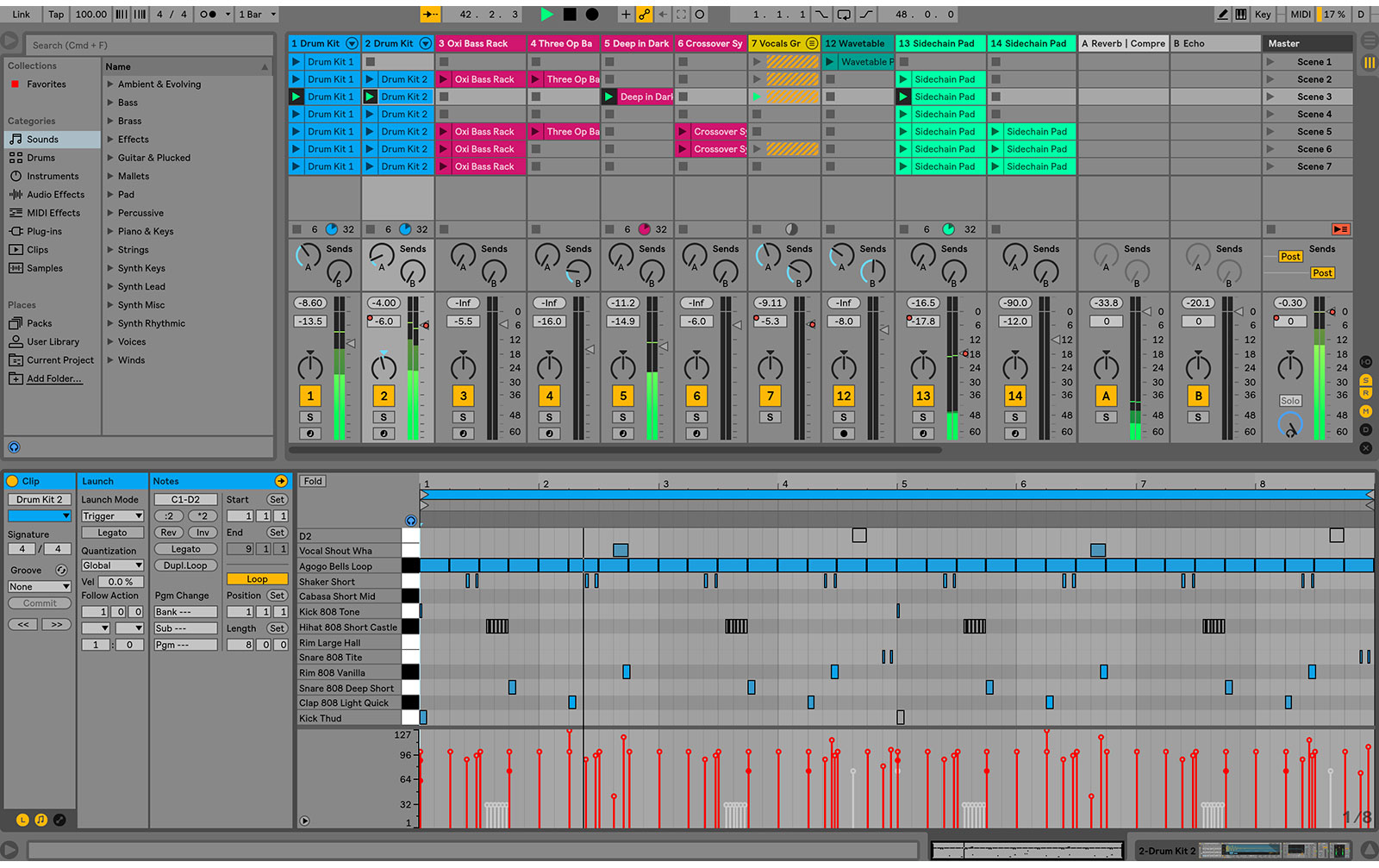
And that means you’ll adjust I think very quickly – ironically both if you were doing most of your editing in Live, and if you weren’t (because you found the absence of these things frustrating). Many other DAWs work in similar ways to this already, but Ableton has managed to add these features without messing too much with its own distinctive interface. Oh yeah, and finally: “It is now possible to move automation segments horizontally.” (People who have been next to me in the studio while editing know that I tended to use … colorful language … in past versions over this.) Things you wished you could do previously suddenly magically start working: like you can double-click anywhere and make an automation breakpoint (not just on the envelope itself). You can always just drag from the corner of a clip to create fades. This makes adding fades and cross-fades easier, too. Now, you can hide or show all automation lanes via a global Automation button (or hit ‘A’). In addition to adjusting how you edit that content directly, Ableton has also made the whole view far more sensible by separating out automation – those “rubber-band” line segments that control changes to device parameters and mix settings. The fact that a lot of this is true of other DAWs makes this even more welcome – both because it’s hard to re-train those habits, and because, well, this is a better way for this to work. Zoom tracks by scrolling with (alt), (cmd/ctrl) verticallyĪt last – view more than one MIDI clip at a time.Minimize all tracks at once, aka “Show All Tracks.” (S).Double-click on a MIDI track to create a MIDI clip.Move clips by dragging the upper half of the clip.Activate/deactivate just a portion of a clip, if you select only part of it.Reverse a selected bit of time, or part of a clip.

Slide the contents of an Arrangement clip directly, by dragging.Stretch Arrangement audio clips directly.And here, it seems like they were watching over our shoulders, adding in features we had been looking for (shown with shortcuts): It’s now finally easier to edit, arrange, and automate your projects.
ABLETON LIVE 10 UPDATE
The Arrangement View is the reason I think you’ll want to update to Live 10. (You can do this from Push, too it seems inevitable that a Push 3 will have a dedicated button, but for now the Record and New buttons will do.) Arrangement and Automation

Just played something on the keyboard you like? Hit the Capture button, and it turns instantly into a clip – no recording needed. “Capture” is a way around this – it listens in on any connected MIDI input on armed/monitored tracks. Also, if you aren’t recording, you’ll suddenly play something ingenious – and then immediately forget it. So, there’s a funny mystery to the universe: the moment you hit the record button, all your creative ideas go away.

That dotted rectangle icon on the right is significant. The new transport – your challenge is to try to recognize it over someone’s shoulder in a club. And like a studio reorganization, you’ve also added some new gear – in the form of new devices called Echo, Wavetable, Drum Buss, and Pedal. In other words, imagine it’s a studio overhaul that did some cleaning, renovating, and reorganizing. There’s more and clearer visual feedback and editing behaviors, on screen and on Push. What Live 10 does is to focus on making a lot of little changes that have a big impact on how you interact with the interface, in editing, arranging, and finishing tracks. On the other hand, we don’t want any major changes to disrupt how we work, break our existing projects, or lead the tool away from why we chose to use it in the first place. On one hand, we’ve all got a big list of stuff we want to see improved, fixed, added – and that list tends to get longer.
ABLETON LIVE 10 SOFTWARE
It’s tough for updates of mature music production software to keep us happy. We’ve had it now a few weeks here’s a look at what’s new. Live 10 adds a tasty new synth and delay effect, an updated look, and many more small details.


 0 kommentar(er)
0 kommentar(er)
